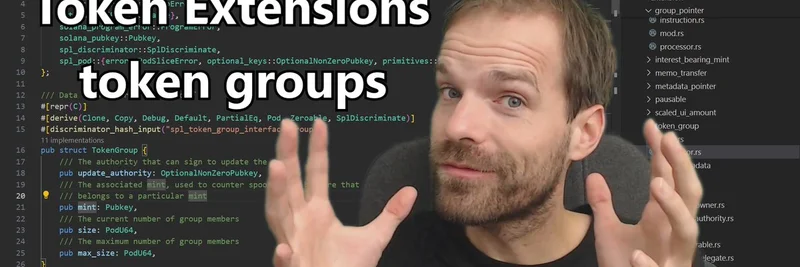If you've ever dabbled in Solana development, you know that while concepts often sound straightforward, the devil is in the details. That's exactly what Solandy, a prominent Solana dev and video blogger, highlighted in his recent tweet. He shared that what started as a simple exploration of token groups ballooned into a comprehensive 75-minute video. For anyone building on Solana—especially those in the meme token space—this is gold.
Why Token Groups Matter for Meme Tokens
Token groups are part of Solana's Token-2022 extensions, which supercharge standard tokens with extra features. Think of them as a way to organize multiple token mints under one umbrella account. This "group" tracks things like the total number of members, a maximum size limit, and an update authority that can add or remove tokens.
For meme token creators, this opens up exciting possibilities. Imagine launching a family of related memes—like variations on a popular character—where each is a separate token but tied together in a capped collection. It adds structure to what can often feel like chaotic meme ecosystems, potentially boosting community engagement and scarcity-driven value. Plus, since many memes thrive on Solana due to its speed and low fees, mastering these extensions can give your project an edge.
Breaking Down Solandy's Tutorial
In his tweet thread (view it here), Solandy admits he underestimated the complexity. The video, linked in the thread, dives deep into the implementation. He notes it could have been split into two parts: a 30-minute intro covering the basics and CLI usage, followed by a detailed analysis using the Solana Program Library (SPL) kit.
From the code snippet in the tweet's image, we see Rust structs for TokenGroup, including fields like mint (the associated mint for counting spores... er, members), update_authority (for signing off on changes), and size constraints (current and max, both as PodU64 for efficient on-chain storage). It's a peek into how Solana's runtime handles these extensions efficiently.
If you're new to this, start with the basics: Token-2022 is Solana's upgraded token standard, building on the original SPL tokens. Extensions like groups allow for programmable behaviors without bloating the core protocol. For devs, this means more flexibility in creating tokens that aren't just simple fungibles but have built-in rules for grouping, metadata, or even royalties.
How to Get Started
Ready to experiment? Head over to Solandy's YouTube video (watch it here) for a step-by-step walkthrough. He covers everything from setting up your environment to deploying and interacting with token groups via CLI commands.
For meme token builders, consider how token groups could enhance your launches. Pair them with other extensions like metadata pointers for rich descriptions or transfer fees for automated royalties—perfect for sustaining creator economies in the volatile meme world.
Solandy tags fellow Solana experts like @solana_devs, @SolPlay_jonas, @jacobvcreech, and @b_migliaccio, hinting at a collaborative community vibe. If you're stuck, check out resources from the Solana Developers docs or join forums to discuss implementations.
This kind of content is why following devs like Solandy is a must for staying ahead in blockchain tech. Whether you're coding your next meme hit or just curious about Solana's evolving toolkit, token groups are a feature worth exploring.



